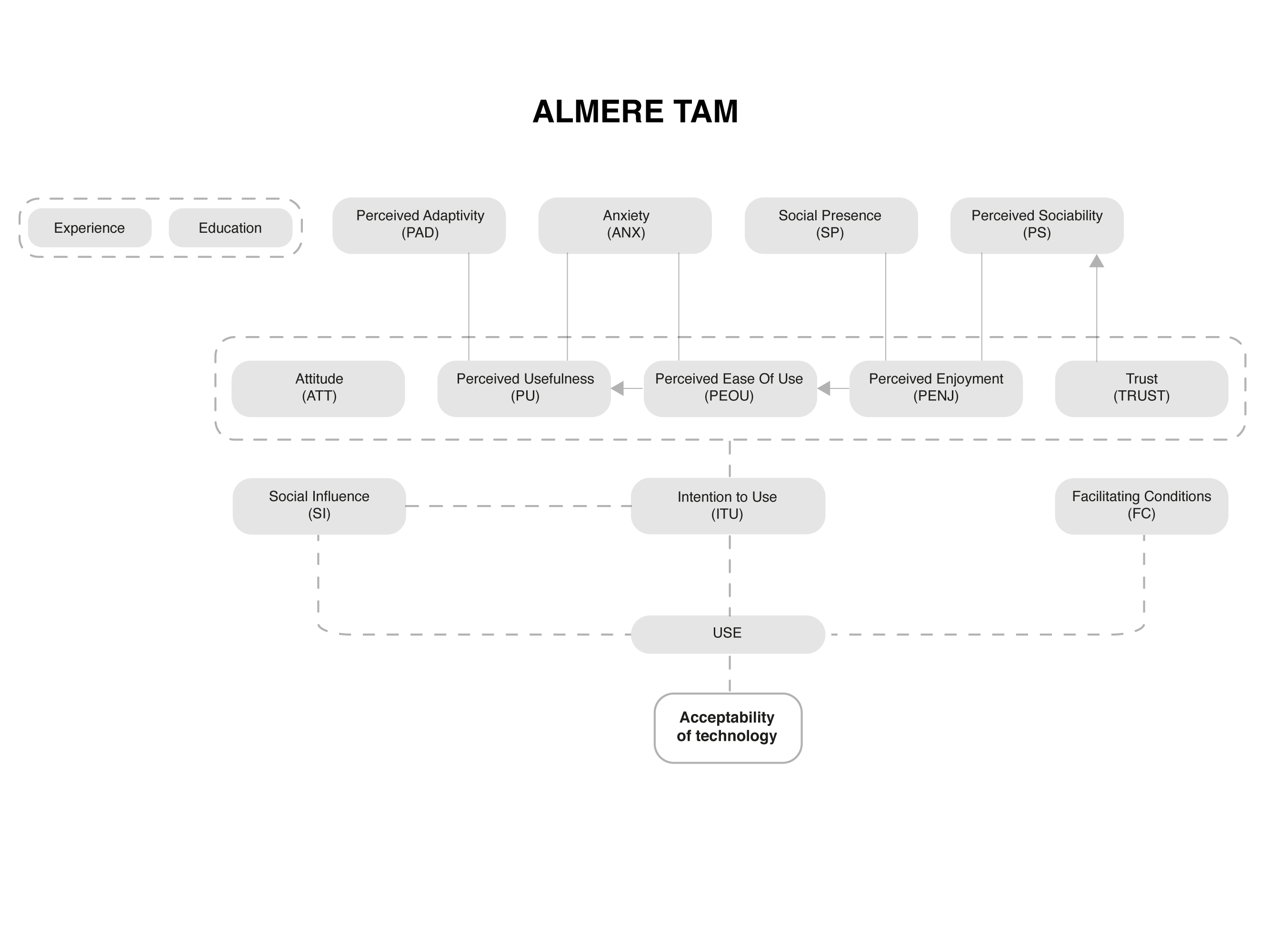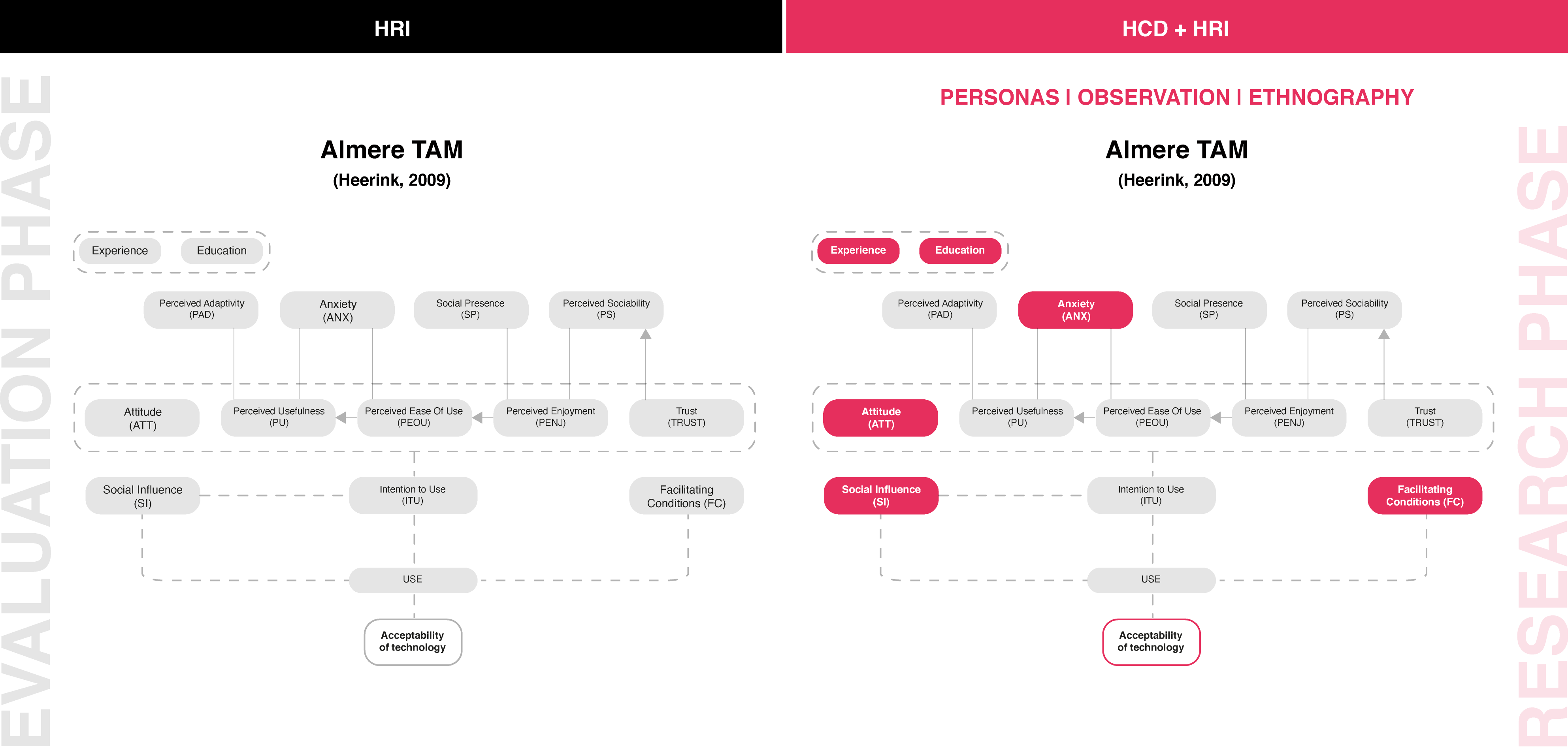Almere TAM
Developed by Heerink et al., (2010)
Almere Technology Acceptance Model
The Almere TAM (Almere Technology Acceptance Model) was developed by Heerink et al., (2010) in relation to the specific area of assistive technology (robots and digital interfaces). It analyses the relationships between thirteen influential constructs for intention to use (ITU) and actual use, namely: adaptability (PAD) and perceived sociality (PS) of the robot, social presence (SP), anxiety (ANX), attitude (ATT), utility (PU) and perceived ease of use (PEOU), perceived enjoyment (PENJ), trust, (TRUST) social influence (SI) and facilitating conditions. It does not take into account moderating variables such as age, gender, experience, level of education, etc., which however may influence the variables of its architecture. Heerink himself (2011) later analyzed how a higher level of education and experience with technology corresponds to a higher perception of user-friendliness and a positive attitude towards assistive technologies.

HCD
HRI
Through the HCD’s own methods, such as personas, it is possible to analyze the facilitating conditions, experience and level of education of the user. Ethnography and observation can be useful to define the user’s attitude and/or anxiety towards robots and the level of social influence that can be decisive for the use and quality of the user experience (Figure 2). In summary, the most effective methods to analyse the selected Almere TAM variables are: Personas, direct observation and ethnographic investigation. Below is the architecture of the Almere TAM method and the relationships between its constructs that determine the acceptability of the technology. In evidence are the influential variables for acceptability that can be preliminarily analysed through the HCD methods identified in the upper part of the scheme (Personas, direct observation and ethnography).
